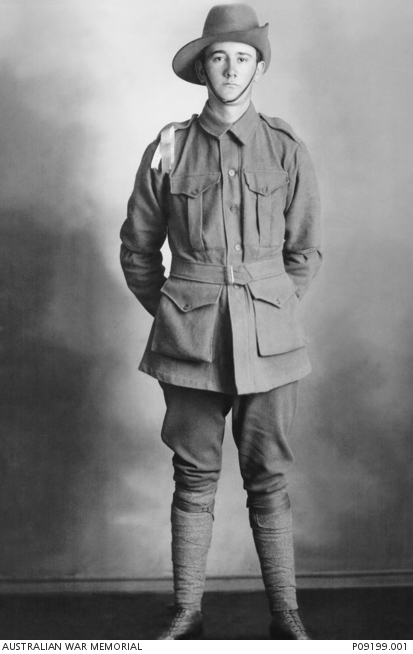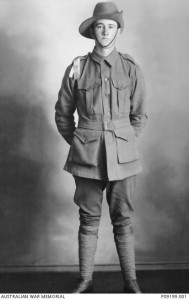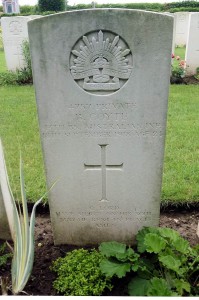Born in Borenore in 1895, Bernard Ambrose Coyte was the fifth of ten children born to William Henry Coyte and his wife Mary Louisa (nee Schmich). Bernard and his siblings were educated at Borenore Convent.
Bernard was one of twenty-two men who joined the Coo-ees when they arrived in Orange on Saturday, 23 October 1915. He was 20 years of age, although he claimed to be 21 on his attestation papers.
Conceived by Captain “Bill” Hitchen of Gilgandra, the Coo-ee March was a recruitment drive in response to dwindling enlistments following the heavy casualties sustained on the Gallipoli Peninsula and in the trenches of France. On 10 October 1915 Hitchen left Gilgandra with 25 men to march the 515km to Sydney, collecting recruits along the way. A total of 264 recruits reached Martin Place in Sydney at noon on Friday 12 November, where they were greeted by Prime Minister Billy Hughes and a crowd of 100,000 people.
After completing the Coo-ee march Bernard proceeded to Liverpool Camp, a private in the 15th reinforcements to the 13th Battalion. He embarked from Sydney on the Star of England on 8 March 1916, and after further training in Egypt, arrived in France for service on the Western Front.
Private Coyte was hospitalised several times during his war service. In March 1917 he was admitted to the 13th Australian Field Ambulance in France, suffering from influenza and pneumonia. He was subsequently transferred to hospital in England, followed by a period of furlough.
In September 1918 the 13th Battalion was engaged in battle just south of the town of Le Verguier in northern France. This battle claimed the lives of five officers and 82 enlisted men; one of whom was Bernard; he was killed in action just weeks before the Armistice was signed. He is buried at the nearby Jeancourt Communal Cemetery Extension.
Bernard is commemorated on St Joseph’s Church Orange Honour Roll, the Borenore and District Honour Roll, the Borenore District War Memorial and on the World War I Roll of Honour on the southern face of the Orange Cenotaph. His name also appears on panel 68 on the Australian War Memorial First World War Roll of Honour in Canberra.
In 1923 the Anzac Memorial Avenue of trees was planted along Bathurst Road to commemorate fallen WWI soldiers. A tree was planted in honour of “Pte BA Coyte”; it was donated by Borenore Retuned Soldiers. Very few of the trees are still standing today.
Before going into battle in September 1918 Bernard wrote the following letter to his brother, Gabriel’s, wife, Lottie. Interestingly, it is dated 1 October 1918; apparently it was not uncommon for men to date letters this way as they went into battle. This is believed to be the last letter that Bernard wrote.
October 1, 1918 France
Dear Lottie,
Just a few lines, Lottie, in answer to your welcome letter to hand dated 9 June, was pleased to get a long letter from you and Gabe. So your little girls don’t forget me by what Gabe told me.
Well I am expecting to be going to England on leave soon. I have been over here a long time and have been existing well.
All the girls getting married, well good luck to them and tell your sisters that I wish them the best of luck as besides fighting hard for years and wasting the best years of my life over here but you know I have a nice little girl over here first for the time being and will close this letter wishing you and the children the best of luck.
I remain, Bernard xxx
Letter courtesy Jenny Kingsford (nee Coyte)



